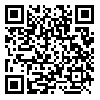مجله رویش روانشناسی از دادن گواهیهای کاغذی معذور است. لطفا تقاضا نکنید. همه گواهی ها در صفحه شخصی کاربران موجود است.
year 14, Issue 4 (sumer 2025 2025)
Rooyesh 2025, 14(4): 181-190 |
Back to browse issues page
Download citation:
BibTeX | RIS | EndNote | Medlars | ProCite | Reference Manager | RefWorks
Send citation to:



BibTeX | RIS | EndNote | Medlars | ProCite | Reference Manager | RefWorks
Send citation to:
Montazeri Hadshi V, Taghvaei D, Sheykhan R. (2025). Comparing the effectiveness of mindfulness-based cognitive behavioral therapy and unified transdiagnostic treatment on body image concerns in adolescents with social anxiety disorder. Rooyesh. 14(4), 181-190.
URL: http://frooyesh.ir/article-1-5965-en.html
URL: http://frooyesh.ir/article-1-5965-en.html
1- Psychology Department, Arak Branch, Islamic Azad University, Arak, Iran.
2- Department of Psychology, Arak Branch, Islamic Azad University, Arak, Iran. ,davoodtaghvaei@yahoo.com
3- Department of Psychology, Arak Branch, Islamic Azad University, Arak, Iran.
2- Department of Psychology, Arak Branch, Islamic Azad University, Arak, Iran. ,
3- Department of Psychology, Arak Branch, Islamic Azad University, Arak, Iran.
Abstract: (526 Views)
The present study aimed to compare the effectiveness of mindfulness-based cognitive behavioral therapy and unified transdiagnostic treatment on body image concerns in adolescents with social anxiety disorder. The research method was a quasi-experimental study with a pretest-posttest design and a control group with a two-month follow-up period. The statistical population of the study included male adolescents with social anxiety disorder referred to counseling centers in District 3 of Tehran in 2023-2024. The sample size consisted of 45 individuals (15 individuals in each group) who were selected through purposive sampling and randomly placed into three groups. The research instrument included the Body Image Concerns inventory (BICI) by Littleton et al. (2005). The mindfulness-based cognitive behavioral therapy group received 8 sessions of 2 hours each, and the unified transdiagnostic treatment group received 12 sessions of 1 hour each. The repeated-measures analysis of variance showed that the difference in the mean of the pre-test of both components of body image concerns with the post-test and follow-up was significant (P<0.05), but no significant difference was observed between the post-test and follow-up (P>0.05). The results also showed that for both components, the difference between the experimental and control groups was significant (P<0.05), but there was no significant difference between the two experimental groups (P>0.05). The results indicated that both interventions in the present study are likely to be effective treatments for improving body image concerns in adolescents with social anxiety disorder.
Type of Article: Research |
Subject:
Clinical Psychology
Received: 2025/01/21 | Accepted: 2025/02/11 | ePublished: 2025/07/1
Received: 2025/01/21 | Accepted: 2025/02/11 | ePublished: 2025/07/1
Send email to the article author
| Rights and permissions | |
 |
This work is licensed under a Creative Commons Attribution-NonCommercial 4.0 International License. |





